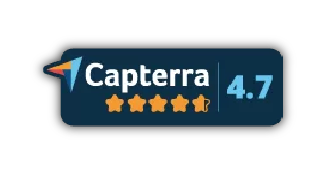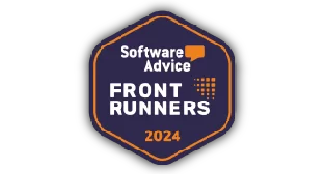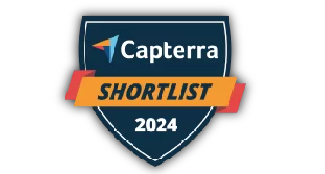Time control at work has become a priority for many companies in Spain since the implementation of the Time Control Law in May 2019. This regulation requires companies to record the working hours of their employees to ensure compliance with labor rights.
Complying with this regulation not only helps avoid sanctions but also promotes a fair and transparent work environment. In this article, we will explore what this law entails, when it is mandatory to clock in, the ways to clock in at work, and how time control software can be the best solution for your company.
The introduction of the Time Control Law has led many companies to review and update their attendance recording methods. In addition to complying with legal obligations, using an efficient clocking system can improve time management and increase employee productivity. Understanding how to implement these solutions is crucial to keeping a company compliant and optimizing its operations.
What is the Time Control Law at work
The Time Control Law is a regulation that requires companies to keep a daily record of the working hours of their employees. This record must include the start and end times of each working day and must be kept for four years. The purpose of this law is to ensure compliance with working hours, prevent abuses, and guarantee that employees receive adequate compensation for their working time.
This law arises in response to the need for greater transparency and fairness in the workplace, as previously, many employees worked overtime without adequate compensation or formal record-keeping, making it difficult to protect their rights.
In addition to recording the start and end times of the working day, the law also requires recording the breaks and rest periods taken by employees during their working day. This includes lunch breaks and any other breaks stipulated in the contract or by law.
When is it mandatory to clock in at work?
It is mandatory to clock in at work in all companies, regardless of their size or sector. This regulation applies to both full-time and part-time employees. However, there are some exceptions, such as senior management employees and other specific roles defined by labor legislation.
The recording must be done every working day, including days when the employee works remotely or in a hybrid mode. This ensures adequate control of working time regardless of the employee’s location.
Companies must clearly communicate to their employees the obligation to clock in and provide them with the necessary tools to do so. This can include mobile applications, access to time control software, or physical devices installed in the office. Proper communication and training are essential to ensure that all employees understand their responsibilities and correctly use the recording systems.
What happens if the record is not kept?
Failure to keep a record of working hours can result in significant penalties for companies. The Labor Inspectorate can impose fines that vary depending on the severity of the violation, ranging from 626 to 6,250 euros.
In addition to economic sanctions, the lack of record-keeping can negatively affect the company’s reputation and generate distrust among employees. It can also lead to labor disputes, as employees may claim that their labor rights regarding working hours and compensation are not being respected.
To avoid these problems, it is essential for companies to implement a robust and reliable system to record the working hours of all employees. This not only ensures compliance with the law but also protects the company and its employees, promoting a fairer and more transparent work environment.
Ways to clock in at work
There are various ways to clock in at work, from traditional methods to advanced technological solutions. Below are some of the most common methods:
- Paper Time Sheets: A traditional method that involves employees manually recording their entry and exit times on a time sheet. This method is simple but can be prone to errors and manipulation. Additionally, storing and managing these records can be complicated and time-consuming.
- Time Clocks: Devices that record entry and exit times using time cards or fingerprints. They are more accurate than manual methods but can be costly to implement. These systems often require an initial investment in hardware, as well as maintenance and technical support.
- Mobile Applications: Digital solutions that allow employees to clock in from their mobile devices. These applications often include additional features such as geolocation and overtime recording. Mobile applications offer great flexibility and are especially useful for employees who work remotely or on the move.
- Biometric Systems: These use fingerprints, facial recognition, or iris scans to record employee attendance. They are highly secure but require significant investment in hardware. These systems also ensure that the record is accurate and difficult to manipulate, providing a reliable attendance control solution.
- Human Resource Management Software: Integrated platforms that not only record working hours but also manage other aspects of work, such as payroll, vacations, and performance evaluation. These systems offer a complete solution for employee management and can be integrated with other company systems.
Each of these methods has its own advantages and disadvantages, and the choice of the right system will depend on the specific needs of each company. It is important to evaluate the available options and select the one that best suits the organization’s characteristics and requirements.
Advantages of having software to clock in at work
Implementing a clocking system at work through specialized software offers numerous advantages for companies. Here are some of the main advantages and their justifications:
- Accuracy and Reliability: Time control software eliminates manual errors and ensures that records are accurate and reliable. This is crucial to ensure compliance with labor regulations and avoid penalties. Additionally, accurate recording of working hours allows for better time and resource management within the company.
- Operational Efficiency: Automating the process of recording working hours saves time and reduces administrative burden. Employees can clock in quickly and easily, and managers can access data in real time. This operational efficiency allows administrative and human resources staff to focus on more strategic tasks.
- Transparency and Trust: A digital clocking system promotes transparency within the company and generates trust among employees, as all records are accessible and verifiable. Employees can check their worked hours and ensure they receive appropriate compensation for their time, fostering a work environment of trust and respect.
- Integration with Other Systems: Many time control software solutions integrate with other human resource management systems, allowing for comprehensive management of work and employees. This integration facilitates payroll administration, vacation and leave management, and performance evaluation, providing a complete and cohesive solution.
- Legal Compliance: Specialized software is designed to comply with labor laws and regulations, ensuring that the company does not incur violations. Keeping up with legal requirements can be complex, but specialized software ensures that the company meets all applicable regulations.
- Accessibility and Flexibility: Allows employees to clock in from anywhere and at any time, which is especially useful for those who work remotely or in a hybrid model. The flexibility to clock in from different locations ensures that all employees can meet their recording obligations regardless of their location.
- Analysis and Reports: Provides tools to generate detailed reports on working hours, overtime, absences, and more, facilitating informed decision-making. Managers can use these reports to identify patterns, optimize resource allocation, and improve overall company productivity.
- Data Security: Time control software often includes robust security measures to protect sensitive employee and company information. Data protection is fundamental in today’s digital environment, and specialized software ensures that all employee information is secure and complies with data protection regulations.
Hybo: the best solution
Hybo is an advanced tool that facilitates the management and booking of spaces and the implementation of time control in companies, offering multiple ways to clock in and ensuring compliance with labor regulations. With Hybo, companies can manage time control efficiently and securely.
Hybo can integrate time control through check-in and check-out of reservations made in the application. Employees can clock in using the application itself, through QR codes in reserved spaces, or via a tablet at the entrance to workspaces.
Additionally, Hybo allows integration with other hardware, facilitating entry and exit clocking using fingerprint scanners, access cameras in parking lots, or building access controls. This flexibility ensures that companies can adapt the system to their specific needs.
Hybo also offers advanced options such as clocking in via URL that validates physical presence in offices or check-in through Wi-Fi controlled by an IP range. Soon, geolocation-based time control will be available, offering even more options for modern companies.
Discover how Hybo can help you comply with the Time Control Law in Spain and optimize your team’s management. For more information, request a demonstration today.












